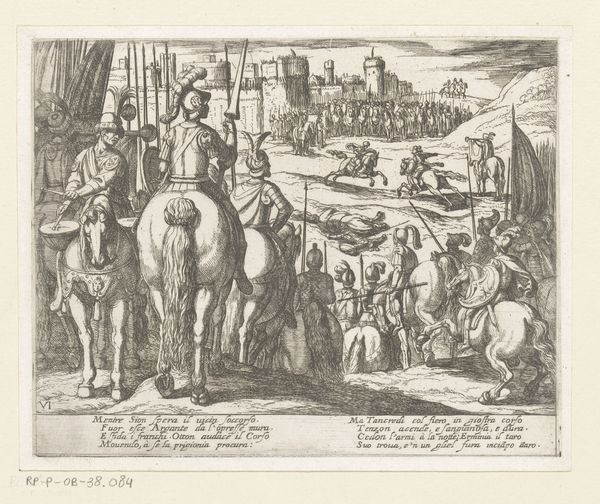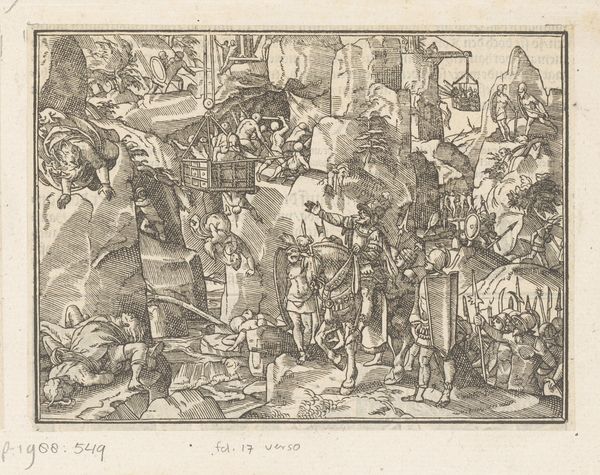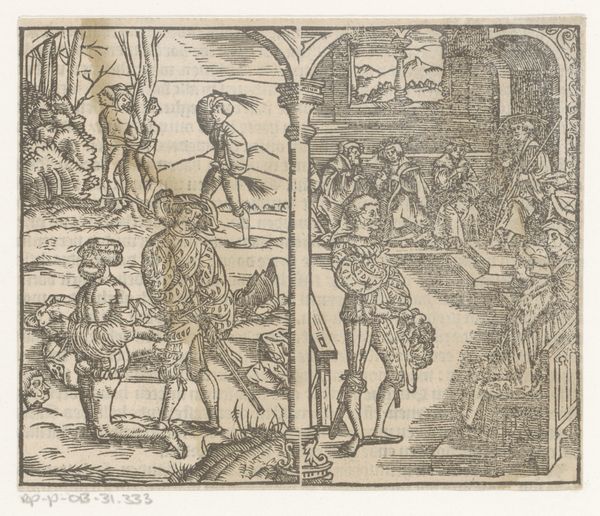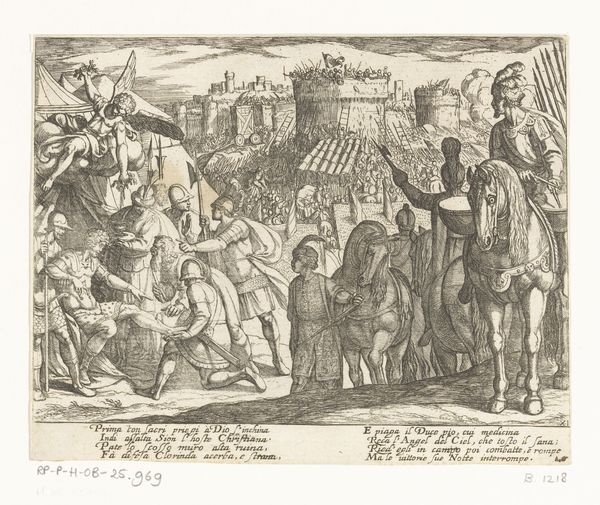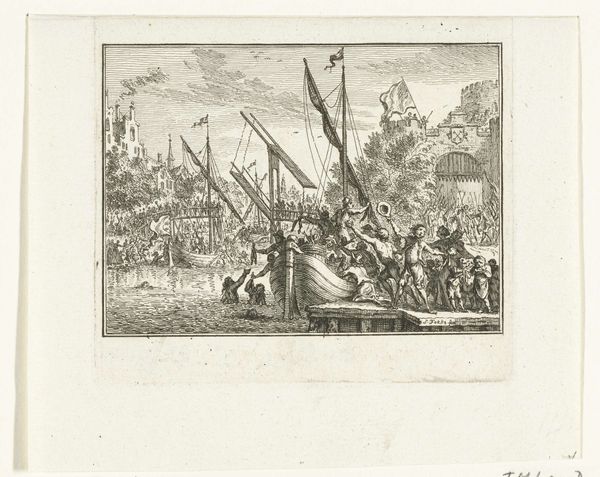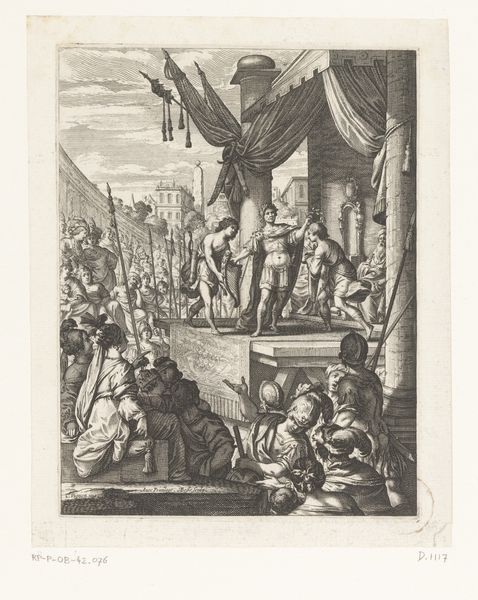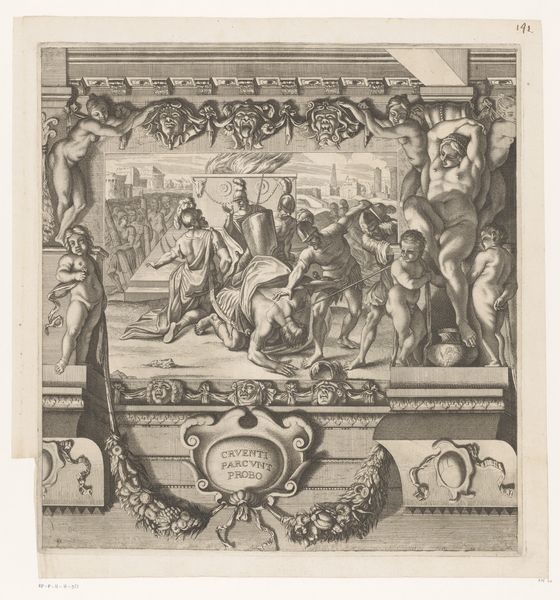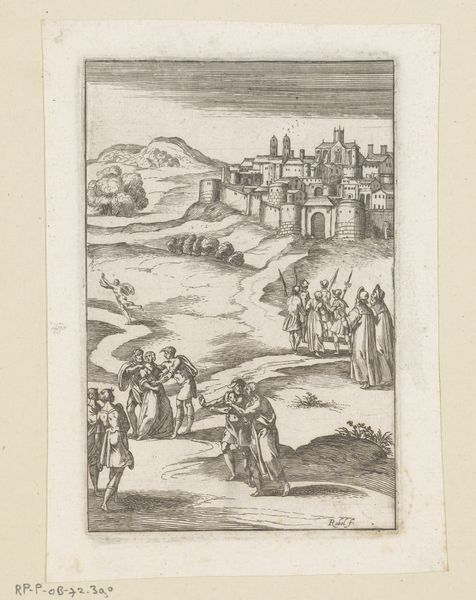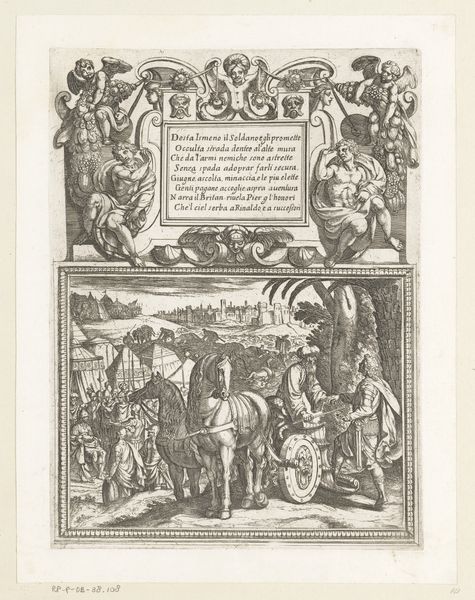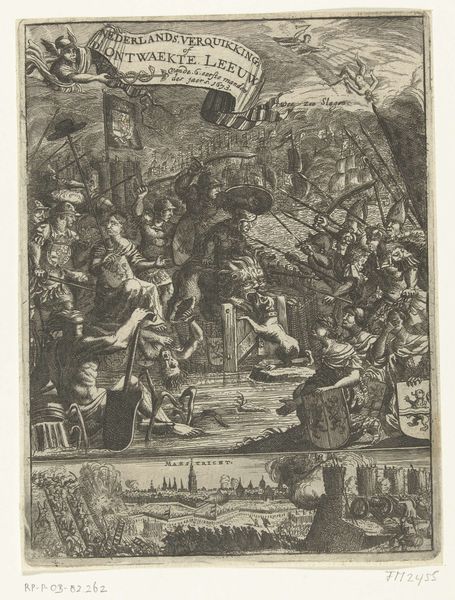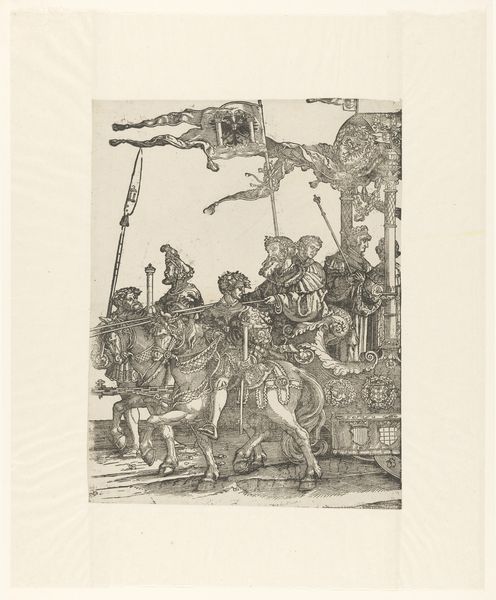
print, engraving
#
narrative-art
#
baroque
# print
#
old engraving style
#
orientalism
#
cityscape
#
history-painting
#
engraving
Dimensions: height 190 mm, width 149 mm
Copyright: Rijks Museum: Open Domain
Editor: Right, next up we have "Procession of the King of Arakan," an engraving by Romeyn de Hooghe from 1676. The sheer detail crammed into this print is incredible! The textures and perspectives are fascinating. I'm curious, with all its details, what catches your eye in this piece? Curator: Ah, Romeyn de Hooghe, a master of visual storytelling. What jumps out, or rather echoes within, is the very *idea* of Arakan filtered through a 17th-century Dutch lens. Imagine, dear student, the tales this print whispered to a public hungry for exotic lands! This wasn't about accuracy, per se, but a projection of power and "otherness." Editor: Projection, how so? Curator: Well, observe! Look at how the figures are posed, the almost theatrical staging of the procession against this meticulously rendered, imagined cityscape. It feels… staged, doesn’t it? Almost like a play within a print. A Baroque fantasy informed by very limited, probably biased, accounts. Do you see the assumed superiority woven into the imagery? Editor: I think I do, now that you mention it. Like, the elephant's decorative garb... were they trying to make Arakanese royalty "understandable" for a European audience? Curator: Precisely! De Hooghe is translating a culture, but inevitably transforming it in the process. We are viewing not reality, but a constructed reality, laden with cultural assumptions. It is like watching a play about people you’ve never met! Editor: That makes me rethink the whole thing. It’s not just a historical record, but a cultural interpretation, twisted through a European perspective. Thanks! Curator: Exactly! It’s a mirror reflecting not just Arakan, but the biases of its time. Now, that's what makes this seemingly straightforward print truly provocative, isn’t it?
Comments
No comments
Be the first to comment and join the conversation on the ultimate creative platform.

